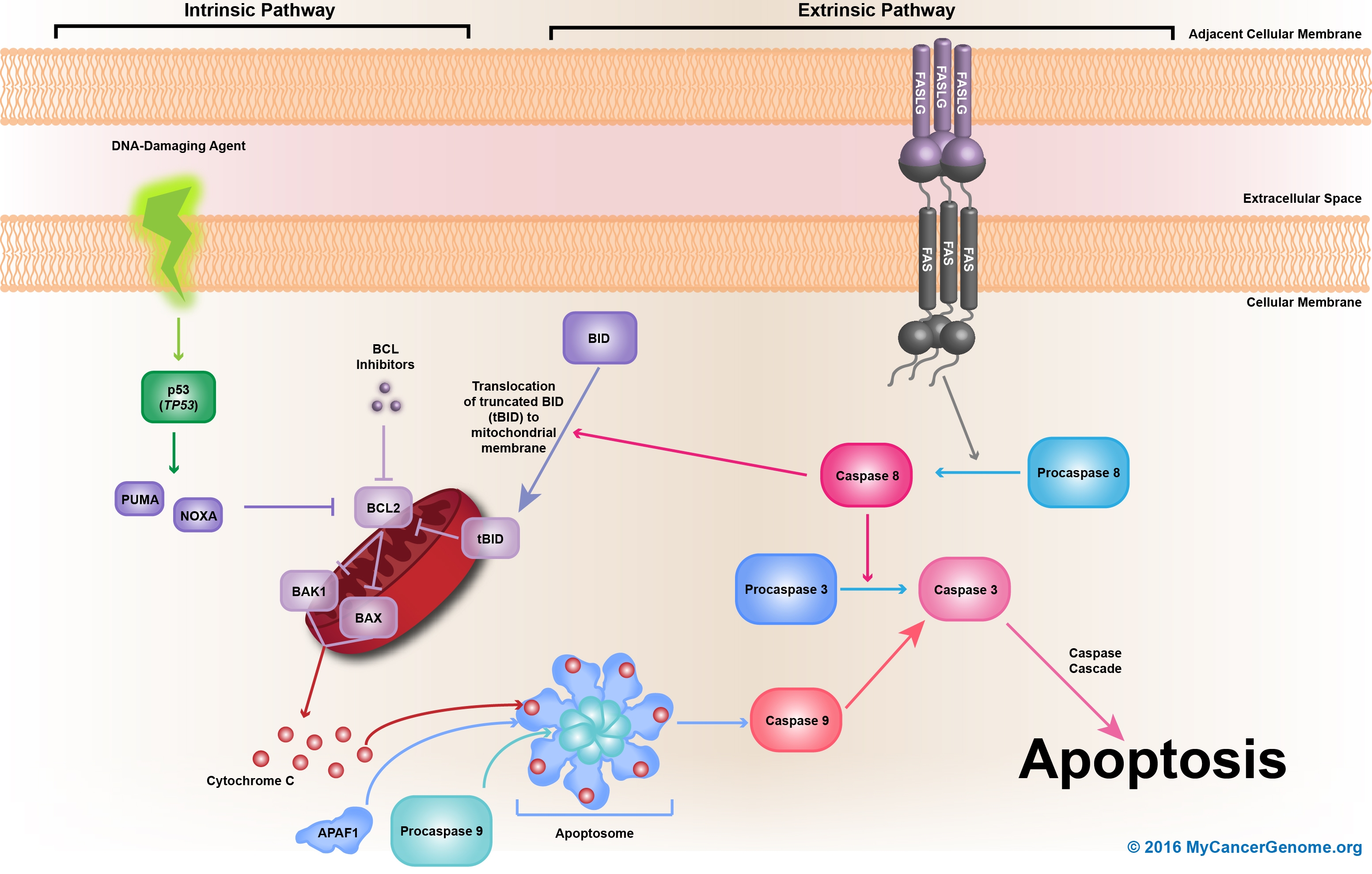Pathways /
Apoptosis
Overview
Apoptosis is programmed cell death. Apoptosis involves both extrinsic and intrinsic pathways that facilitate cell death. The extrinsic pathway is a FAS ligand/FAS receptor- mediated pathway triggered by events that occur outside of the cell. The intrinsic pathway is triggered by intracellular events and controlled by the mitochondria. Both the intrinsic and extrinsic pathways trigger a caspase cascade that initiates the apoptosis/death of cells that may contribute to diseases, including cancer. [1]

Figure 1. Apoptosis is regulated by both extrinsic and intrinsic pathway mechanisms. The extrinsic apoptotic pathway is activated by the binding of Fas ligand (FASLG) to Fas cell surface death receptor (FAS). This binding induces apoptosis through a caspase cascade. Conversely, the intrinsic apoptotic pathway is activated by intracellular stress caused by cell toxins, viral infections, free radicals, radiation, or DNA damage. The activation of this pathway is initiated by BCL-2 family proteins in the mitochondria. Mitochondrial activation discharges pro-apoptotic proteins into the cytosol causing caspase activation proceeded by cell death.

 Back to Pathways List
Back to Pathways List
